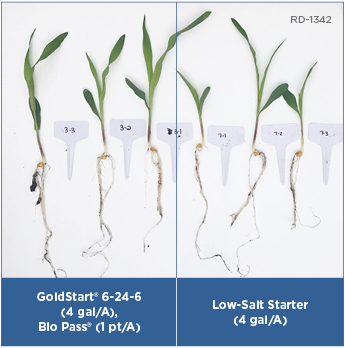4R Practices for Fertilizer Management in Potatoes
Phosphorus is a key nutrient for the development of the potato plant and tubers, writes The Fertilizer Institute’s Director of Agronomy Sally Flis on NutrientStewardship.org. The status of P in the plant, deficient or sufficient, is closely related to yield. With the high value of a potato crop and the influence of proper phosphorus nutrition on plant and tuber development, the 4Rs and especially timing of phosphorus availability are critical to maximizing yield per acre.
Selecting the right suite of 4R practices is key in every cropping system. While much of the discussion is often around corn and soybean systems, selecting the right source of fertilizer at the right rate, at the right time, and in the right place for economic, environmental, and social benefits also applies to crops like potatoes. In 2017, potatoes were planted on 906,700 ac in the United States (USDA-NASS, 2018). Idaho is the number one potato-producing state, supplying 34% of the potatoes in the U.S. in 2017, with an economic value of $975 million (USDA-NASS, 2018). Phosphorus is a key nutrient for the development of the potato plant and tubers. The status of P in the plant, deficient or sufficient, is closely related to yield (Thornton et al., 2008). Daily uptake ranges from 0.3 to 0.5 lb P/ac and increases rapidly during tuber initiation, continuing as the tuber grows until the plant reaches maturation (Stark et al., 2004). With the high value of a potato crop and the influence of proper phosphorus nutrition on plant and tuber development, the 4Rs and especially timing of phosphorus availability are critical to maximizing yield per acre.
Nutrient Management Challenges in Potato Production
Phosphorus solubility in the field is challenged by the soil’s characteristics, including pH, cation exchange capacity, and cation solution concentrations for Al, Fe, Mn, Ca, and Mg. Potatoes remove 0.12 lb P/cwt tubers harvested compared with 0.35 lb/bu for corn and 0.73 lb P/bu of soybeans (IPNI, 2012). However, potatoes have a relatively high nutrient demand in part due to a shallow, inefficient rooting system. Depending on the soil test concentration of phosphorus, recommended rates of P2 O5 fertilizer in Idaho range from 0 to 440 lb/ac where the maximum rate of P2 O5 recommended for corn grain in Idaho is 120 lb/ ac (University of Idaho, 2009). Additionally, the response to P fertilization varies depending on the variety or potato grown (Thornton et al., 2008; Love et al., 2005). When increasing rates (0, 100, 200, and 300 lb/ac) of monoammonium phosphate (MAP, 11–52–0) were broadcast-applied in the spring prior to potato planting on four different potato varieties, only three of the varieties had a significant increase in petiole phosphorus levels with increasing phosphorus application (Thornton et al., 2008). Two of the varieties tested, Ranger Russet and 6LS, had a greater response to increased phosphorus rate compared with Russet Burbank and Shepody (Thornton et al., 2008). Understanding the differences in variety, plant root structure, and nutrient uptake timing is important when determining a fertilization strategy.
Continue reading at NutrientStewardship.org.





